Here's the brand new cast iron brazing job. It's a front motor pulley on an antique Case SC tractor. This pulley has been loose and wobbling for years. It has a bolt that goes through the pulley and the crankshaft. I have no clue if that is factory design or if someone bolted this on and some point. In any case, you have to take the whole front end of the tractor off to repair it. So that's why I let it go for so long. But now it needs to be fixed. The pulley wobbles terribly and is an extremely loose fit.
The following photo shows the pulley on the crankshaft. The bolt that used to hold it on broke off and is missing entirely.
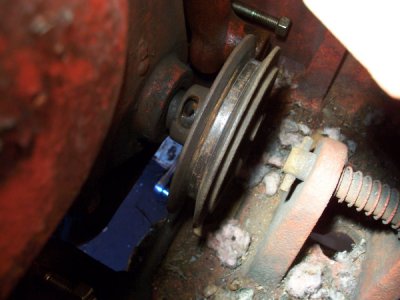
This next photo shows the crankshaft with the pulley removed. I'm absolutely astonished that the crankshaft doesn't appear to be damaged at all. I was expecting to find a totally out-of-round chewed up nub. But the shaft actually looks pretty doggone nice. So no problem there.
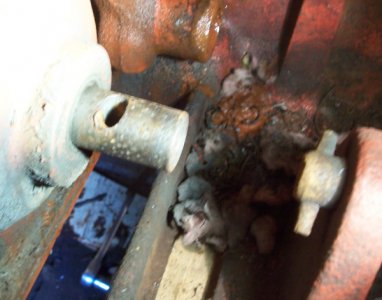
Here's the removed pulley. Notice the chewed up shim that was in it. Apparently that's what saved the crankshaft from being damnaged. This shim appears to have taken the brunt of being chewed up.
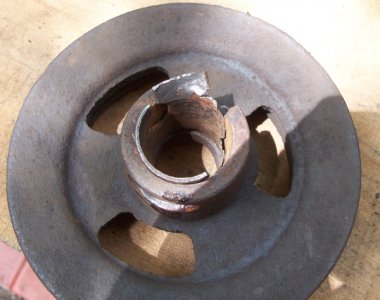
Here I have removed the shim from the pulley. The pulley itself is pretty chewed up inside. Not nearly as bad as I was expecting. But I'll definitely bore this pulley out to clean it up a bit.
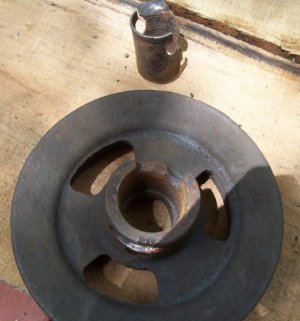
The following shot shows how the bolt elongated the holes. Originally this was just a hole, not a slot.
You can also see where the bolt has basically eaten away and most of the pulley flange.
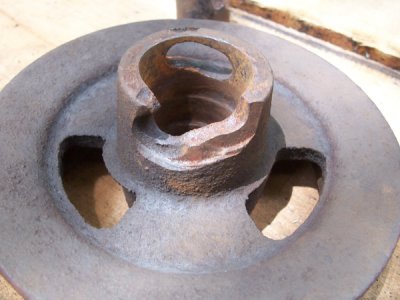
The other side didn't get chewed off quite as bad.
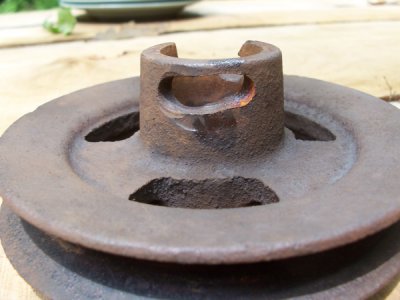
I found an old piece of gas pipe that fits pretty well. I think I'll use t his for the new shim.
I know the pipe looks pretty bad, but I think I have a cleaner piece around that I'll actually use.
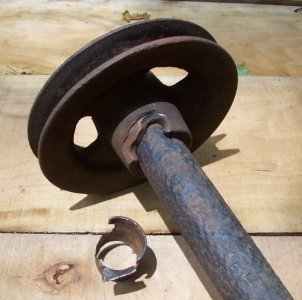
Here's my current plan of attack.
1. Bore out the pulley to just fit the gas pipe.
2. Grind down the elongated bolt holes.
3. Insert the gas pipe into the pulley and have a brazing bonanza.
Fill up all the elongated bolt holes while allowing the gas pipe to also be brazed into the pulley.
4. Face off the finished assembly.
5. Put it back in the lathe and bore out the inside of the gas pipe to the correct diameter to fit back on the crankshaft.
6. Re-drill a new bolt hole.
7. Bolt the pulley back on the tractor.
And if anyone asks I'll just pretend that I don't know who the idiot was that fixed it.
How's that sound?










